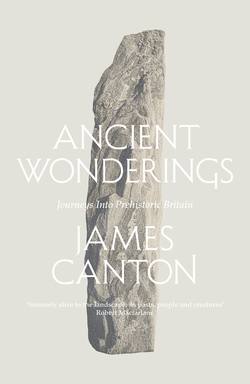Читать книгу Ancient Wonderings: Journeys Into Prehistoric Britain - James Canton, James Canton - Страница 9
ОглавлениеDOGGERLAND
Several months later, I began to become intrigued by a place that no longer existed. It was an ancient landscape that now lay far under the North Sea. It was a world called Doggerland. There were teasing little indicators of this world. Small pieces of dark brown organic material could be found on the Norfolk coast that were segments of peat or wood from the submerged forests and fenlands of Doggerland as it had existed as an environment, a place for people to live on and call a home thousands of years ago as the last Ice Age ended.
It was a project that had been stewing quietly away for a while. On my last birthday my old friend Ant had given me a copy of Submerged Forests by Clement Reid. The book had been first published in 1913. I had known of the work but never read it. Clement Reid was another of those Victorians who possessed a wonderfully inquisitive sense of discovery. He had studied geology and biology in the mid-nineteenth century when a biblical-based chronological approach to delineating the ancient world still reigned, forcing the history of human activity on the earth into a six-thousand-year period. Charles Darwin’s On the Origin of Species had been published in 1859. Then there were those emergent theories of geology by figures such as Charles Lyell that had also served to challenge the dating of prehistory centred on biblical interpretation. Yet notions of prehistoric worlds and their human inhabitants had remained constricted by scripture.
In 1913, Clement Reid was near retirement from his position as geologist at the University of Cambridge. Submerged Forests was his summary of work on the ancient landscapes of Britain and Europe, on ‘Noah’s Woods’ – those strange remnants of trees from the past found often with fossilised bones of long vanished animals and lumps of earthy peat or ‘moorlog’, as the local sailors knew this sea peat. These reminders of past forests were dredged from the dark depths along with the bones of the exotic and extinct creatures that had roamed them; not uncommon catches for the fishermen who worked the North Sea. Clement Reid’s Submerged Forests collated the evidence for a vast plain stretching from the Dogger Bank for miles south where now the waters of the North Sea lay. The book also raised questions way beyond matters of geology as to the nature of that landscape and of the peoples who lived there at the end of the last great Glacial Epoch and settled the lands of an emergent Britain.
Reid’s preface to Submerged Forests is a perfect statement on the necessity of interdisciplinary study, the need for a renaissance mindset:
Knowledge cannot be divided into compartments, each given a definite name and allotted to a different student. There are, and always must be, branches of knowledge in which several sciences meet or have an interest, and these are somewhat liable to be neglected. If the following pages arouse an interest in one of the by-ways of science their purpose has been fulfilled.
The obvious difficulty with exploring Doggerland was that it now lay under many metres of cold, dark, rather forbidding sea. At Easter, walking the beach with my daughter Eva seeking small reminders of those submerged forests that existed beneath the waters, I had wondered on the possibility of reaching one of the sandbanks that still rose from the North Sea during a low tide – such as Dogger Bank itself, which Clement Reid saw as the plateau that stood some thirty metres above the northern edge of the vast ‘alluvial flat connecting Britain with Holland and Denmark’.1
I had checked maps. It would mean a journey of some one hundred kilometres out into the sea. My initial plan had been to sail away into the North Sea and jump out on to the debatable sands of Dogger Bank. It now seemed rather fanciful. I didn’t even know how to sail. I had an inflatable canoe. That was it. Even if I could somehow manage to persuade someone to head out into the open sea; even if I reached some semblance of land out there, I would be standing many, many feet above any signs of Doggerland and the people who lived there ten thousand years ago. The plan needed a rethink.
I turned back to the books.
In 1931, a fishing trawler the Colinda was sailing along the Norfolk coast between two raised lands known as the Leman and Ower Banks. It was night when the nets were pulled in. Among the usual odd lumps of peat and a few bones, ship’s captain Pilgrim E. Lockwood had a single piece of moorlog some four feet square. Instead of chucking it back into the dark seas, Lockwood decided to split it open with a shovel. His spade struck something solid. Lockwood broke the moorlog apart. Out fell a prehistoric antler harpoon.2
The harpoon was some eight and a half inches long. A row of barbs had been carved along one edge; there was a sharpened point and a series of notches presumably to secure fastening to a shaft. You could easily imagine someone strolling the shores of Doggerland at low tide, using the ‘harpoon’ to spear flatfish or eels. Here was real evidence of life in Doggerland. The Colinda harpoon was dated to Mesolithic times, the Middle Stone Age; an era when the populace of Europe were still hunter-gathers. The more settled, sedentary farming ways of the Neolithic had yet to arrive. Mesolithic existence apparently consisted of small groups of people living in extended family units, communities able to move about the landscapes seasonally, travelling the lands from one favoured site to another: for food, for flints and for shelter.
